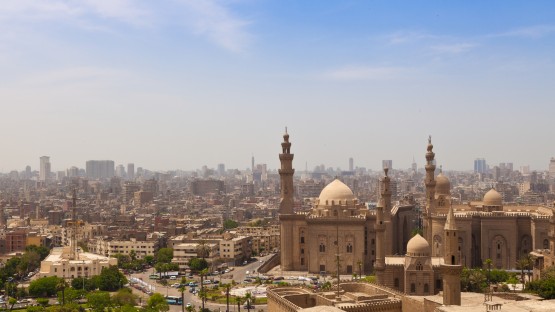The Best Countries for Women to Pursue a Career Abroad
1. Mexico
For women working abroad, it’s Mexico which tops the charts in terms of career prospects: close to seven in ten (68%) are satisfied with their career opportunities. However, it looks like they have to work pretty hard for that. As the average working week for a full-time job has 45 hours, it hardly comes as a surprise that 26% of expat women working in Mexico are unsatisfied with this factor.
Moreover, despite the “job and career opportunities in an environment where expats have a good standing in general”, great prospects don’t always mean great pay: only 29% of women think their income in Mexico is higher than it would be in a similar job or position back home, compared to 38% of male expats. Nonetheless, 60% of women state their household income after taxes is more than enough to cover their daily expenses.
2. Myanmar
When it comes to satisfaction with career prospects among women working abroad, it’s slightly surprising that Myanmar ranks second worldwide: there, most expat women work in education (43%), with non-profit, charity, and religious organizations (14%) trailing far behind — two sectors that aren’t traditionally associated with fast-track careers.
However, overall job satisfaction among female expats working in Myanmar is also very high: 85% rate this aspect positively, compared to 61% on a global scale. The Southeast Asian country even ranks first among expat women for generous household incomes: 39% think they have a lot more than what they need to cover their cost of living, over four times the worldwide average of 9%.
3. Cambodia
Out of the top 10 countries for women to pursue a career abroad, Cambodia has the highest share of female expats who are satisfied with their working hours (82%). Interestingly enough, they only work a little less per week than the global average (average hours for full-time jobs: 42.4 vs. 42.7 worldwide). Just like in Myanmar, the largest percentage by far works in education (43%), followed by nonprofit, charity, and religious organizations (13%).
More than three in five expat women working in Cambodia (63%) are satisfied with their career opportunities in the country. As an expat from Russia puts it, “there are so many ways to develop and to try yourself in different spheres” .
4. Bahrain
Among the top 10 destinations for expat women’s career prospects, Bahrain features the highest share of women working full time (93%). However, with 40.9 hours a week, they also work significantly less than the global average of 42.7 hours.
Unsurprisingly, 77% of expat women working in Bahrain are happy with their work-life balance. “You can still find the time to relax after a day at work,” an expat from the Philippines states. What’s more, nearly two-thirds (65%) think they now make more than in a similar position in their home country — an impressive number, though still somewhat lower than among the male expats working in Bahrain (74%).
5. New Zealand
Quite unlike Bahrain, New Zealand actually has the highest share of women working only part time abroad (34%) among these top 10 destinations. One potential reason: most expat women moved to New Zealand to improve their quality of life (28%), whereas only 4% cite a work-related reason as their main motivation for relocating. “It’s just so beautiful here,” a US American living in New Zealand emphasizes.
However, expat women working in New Zealand aren’t just satisfied with their work-life balance (74%). Despite the high quota of part-time employment, they are satisfied with their career prospects (61%), their job security (71%), and especially their job in general (76%). Moreover, 53% say they make more money among the “Kiwis” than they would in a comparable position back home — about as many as among the men (54%).
6. Kazakhstan
In contrast to New Zealand, more than half the expat women living in Kazakhstan moved there for work-related reasons: about one in four (26%) found a job there on their own, 15% were sent on a foreign assignment, and 12% were recruited from abroad by a local company. Since the women working abroad in Kazakhstan put in an average of 45 hours in a full-time job, compared to 42.7 hours globally, it’s easy to understand why 28% rate their work-life balance negatively (vs. 22% worldwide).
However, career prospects (67%) and especially job security (71%) receive favorable ratings. “I do the job I like, and I’m appreciated as a professional,” an expat from Georgia says. Lastly, 62% of all expat women working in Kazakhstan think they have improved their income compared to a similar job at home; another 76% are satisfied with their financial situation in general.
7. The United Kingdom
While many expat women work in education — see, for example, the results for Myanmar and Cambodia above — occupations are more evenly spread across various sectors in the UK: 14% each work in education, in healthcare, or in advertising, marketing, and PR. The career prospects for expat women working in the UK are also rated a lot more positively than the average worldwide (67% vs. 51% globally).
A French expat remembers that arriving in the UK, “I had almost no experience in my field, but this country gave me the chance to prove I could do the job”. An expat from Germany appreciates that “it’s easy to be self-employed here”. However, although about half the women working abroad in the UK (51%) state they make more money than they would at home, only about one-third (35%) feel their household income is enough to cover all expenses.
8. The United States
While expats’ satisfaction with many aspects of life in the US has decreased a lot within the past year, the country dropping 17 places in the overall ranking, career prospects remain a point in favor for the “land of opportunity”. Among women from abroad working in the US, nearly two-thirds (64%) are satisfied with this factor. “The career opportunities are indeed incredible,” an expat from Canada says, while a German appreciates “the entrepreneur-friendly spirit” in the US.
Moreover, more than three in five expat women working there (62%) believe they earn a higher income than they would in a similar job back home. In fact, 16% of expat women in the US have a household income of over 150,000 USD per year, twice the global average (8%). However, their satisfaction with job security (52%) is the second-lowest in the top 10 countries listed here: only Kenya has an even lower satisfaction level for this factor (48%).
9. Kenya
As we’ve already hinted at in the section above, expat women working in Kenya seem to face insecure working conditions and long hours. Only 48% are satisfied with their individual job security, compared to 57% around the globe. With an average full-time week of 46.4 hours, they still work the longest hours among the top 10 countries for women to pursue a career abroad.
At least, three in five women working abroad in Kenya are happy with their career opportunities, in spite of long hours and less improvement in income than among the men: only 36% of women think they earn more in Kenya than they would back home, while nearly four in five male expats (78%) believe the same. Household incomes — to which more than one person may contribute — can be pretty high indeed: 16% of expat women have access to an annual figure of more than 150,000 USD, same as in the US.
10. Ireland
Nearly seven in ten expat women working in Ireland (69%) are happy with their work-life balance, and they actually work fewer hours in full-time positions than the worldwide average (41.0 hours vs. 42.7 hours globally). In addition to their high satisfaction with work-life balance, they rate both their career prospects and their personal job security positively: 63% are satisfied with the former, and another 64% are happy with the latter factor (globally: 51% and 57%, respectively).
On the downside, expat life in Ireland can be rather expensive: while 51% of women earn a higher income in business or employment than they would at home, fewer than two-thirds (64%) think their household income is enough or more than enough to get by — nine percentage points below the global average (73%).


















